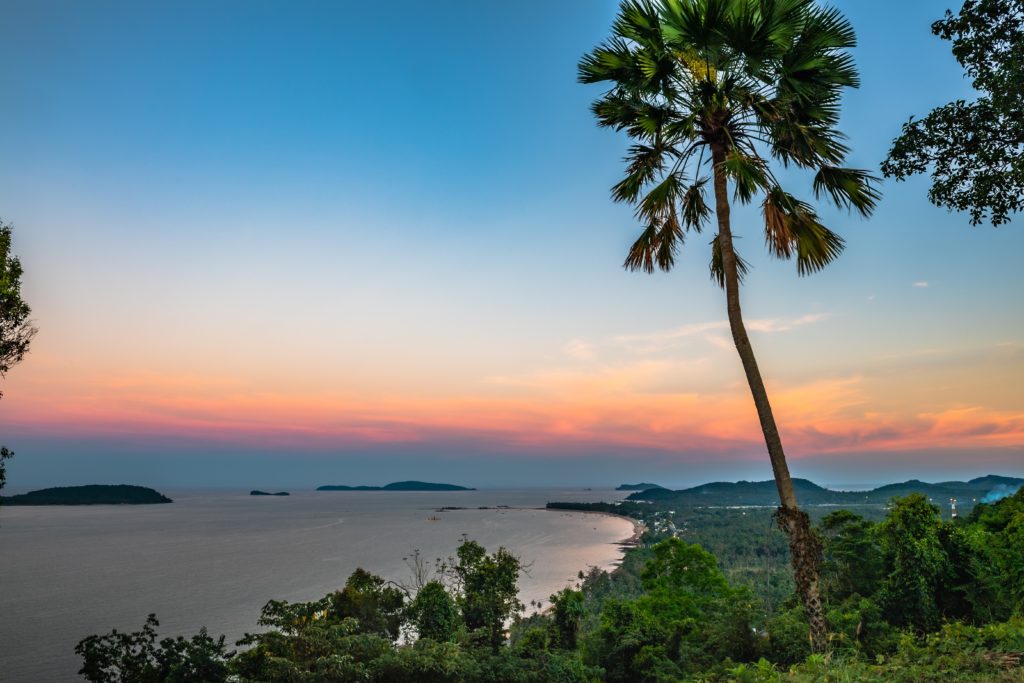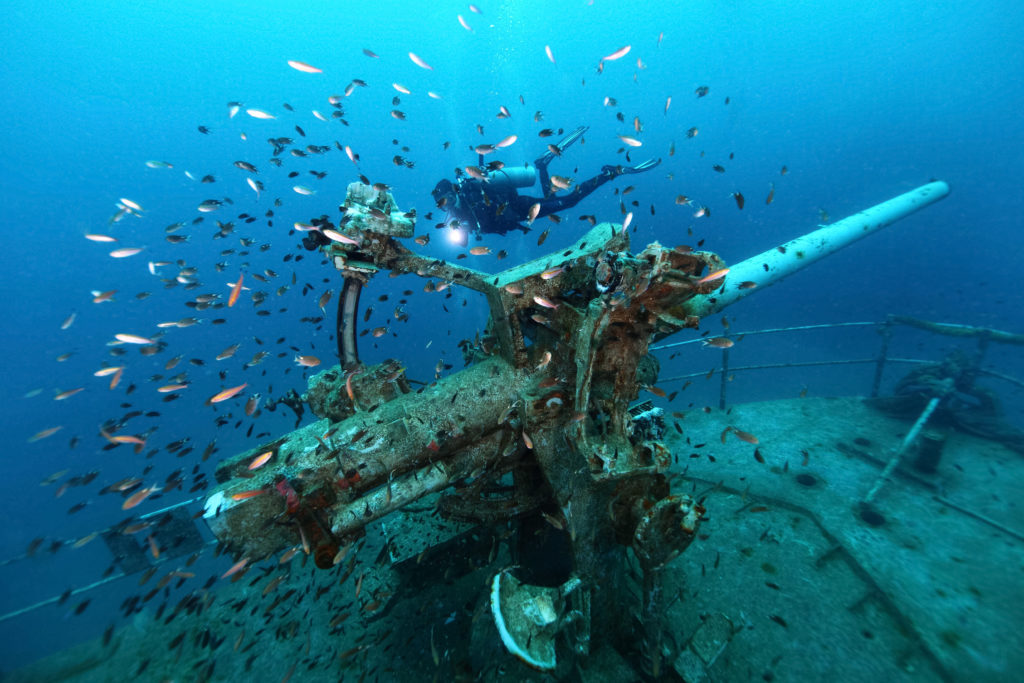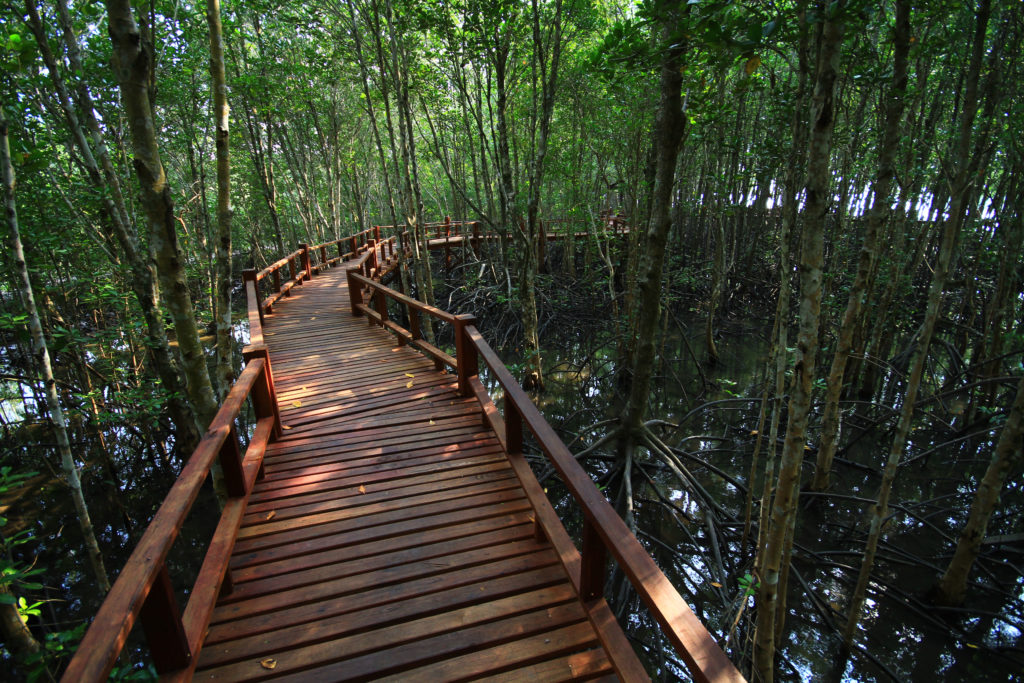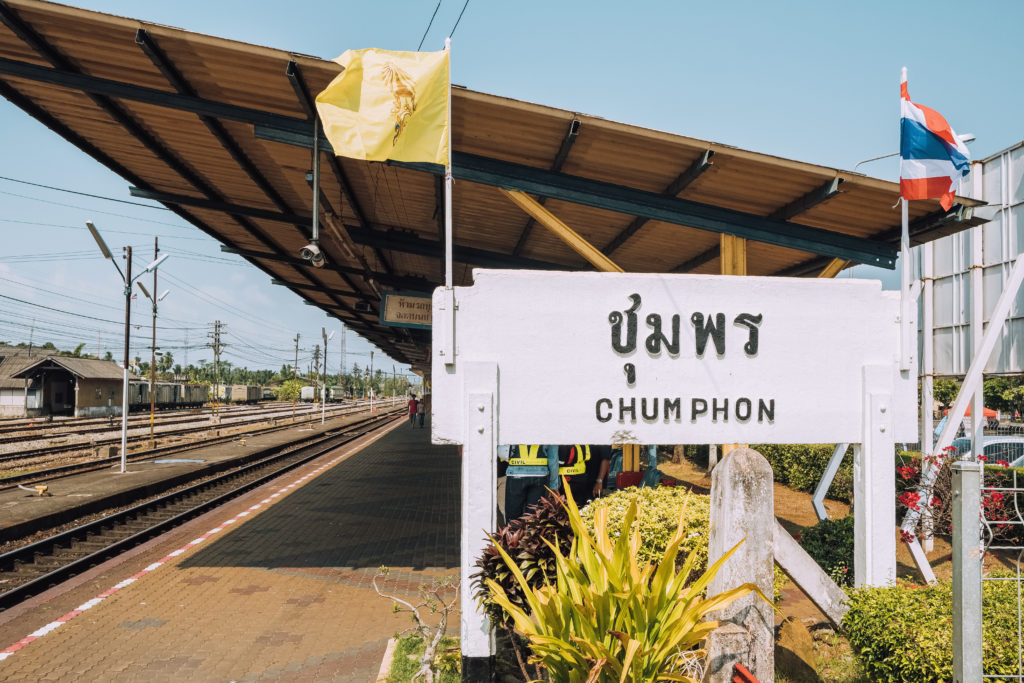Chumphon: Many Blessings
on the Gulf of Thailand

There are a few tourists that visit Chumphon, but for those who do come to stay for a long time. This southern Thai province is a major embarkation point for beach-happy travelers headed to Ko Tao, as it serves a shorter route from Bangkok compared to the alternative at Surat Thani. While the charms of Chumphon isn’t as well known as other provinces, adventurous visitors will find a lot to love about its secluded beaches, pristine dive spots, and abundant fruit farms.
Chumphon translates to “gathering place for blessings,” and it offers tourists a lot of things to do rather than just an overnight stay.
Chumphon’s Beaches
Located on the coast of the Gulf of Thailand, Chumphon’s 200 km coastline brim with white-sand beaches and fishing villages. Part of the Chumphon coast has been gazetted as a National Park; inland, the fertile soil yields bumper crops of rubber, rambutan, durian, mangosteen, and coffee.
But Chumphon is still off the beaten path for foreign tourists. Even Chumphon’s most “famous” beaches feel far removed from the crowds of Ko Tao and Ko Samui. Thung Wua Laen beach offers a vast 3 km stretch of white sand, with only a few people to enjoy the sight except for the occasional tourist or fishing-boat crew.
Thung Wua Laen might be behind other Thai beaches in terms of infrastructure, but that’s part of its charm. The restaurants and resorts that have cropped up here feel homier, permitting the illusion that you have indeed made a clean getaway from your troubles.
Another beach, Hat Sai Ri, is a tree-lined stretch of white sand opposite Ko Maphrao island. You can come for the views, but don’t expect a peaceful ambiance. Supplicants at the nearby Prince of Chumphon Shrine, dedicated to the modernizer of the Royal Thai Navy, believe that their prayers will be answered if they light noise-making firecrackers!
For an overhead view of Hat Sai Ri and nearby islands, go to the Khao Matsee Viewpoint. From here, you can visit a statue of the Avalokitesvara Bodhisattva and watch with her over the Chumphon estuary, the local fishing villages, and the Chumphon Sea beyond.

What to Do in Chumphon: Sea Adventures
Diving. Many dive expeditions in Chumphon originate from Thung Wua Laen. Dive shops and other equipment rental outlets on the beach made this part of Chumphon a key aqua-adventure hotspot.
The waters off the islands of Ko Ngam Yai and Ko Ngam Noi offer some of the best diving spots in the Gulf of Thailand, with a proliferation of soft corals and sea urchins. You’ll find yourself swimming alongside turtles, banded sea snakes, and the occasional whale shark.
The best time to go diving at Chumphon is between February and October.
Kitesurfing. On the other hand, kitesurfing season in Chumphon takes place between October and January. You can rent a rig at Thung Wua Laen or take lessons from one of the beach’s kitesurfing schools, at surprisingly affordable prices.
Whitewater rafting. Further inland, the Amphoe (district) of Phato manages a whitewater rafting experience using bamboo rafts that run down the Langsuan river, past durian farms, and old-growth forests. A rafting festival opens the season every February that lasts until April.

What to Do in Chumphon: Nature Encounters
Fishing villages and farms comprise most of Chumphon. To see the province at its wildest, you need to visit the Mu Ko Chumphon National Park, a 317-square-kilometer protected area comprising part of the mainland coast and 41 islands covered in rainforest, mangroves, and karst outcrops.
The mainland part of the National Park includes Thung Kha Bay Mangrove Forest Park, a network of boardwalks and bridges that blaze a path through virgin mangrove forests. Some of the islands in the Park harbor communities of sea swiftlets, whose edible nests are harvested as a cash crop.
What to Do in Chumphon: Local Experiences
Tourists who don’t stay for long tend to miss out on the generosity of Chumphon locals—an experience that visitors that visit longer have the opportunity to see for themselves. The fishing communities of Chumphon allow visitors to take in the local atmosphere, from spots like the Baan Pak Nam village at Chumphon Harbor and the fishing village at the island of Ko Phithak.
In Baan Pak Nam, you can spend a few hours wandering through the village’s narrow alleys and watch fishermen and their families go about their daily business. On Ko Phithak, you can arrange a homestay and join the fishermen as they ply their trade.
The Chumphon Night Market, located on Wangma Road in Chumphon City, offers a different kind of local experience. Buy fresh fruit, local souvenirs, and Thai street food as you pick your way through the stalls. During durian season between June and October, the Night Market opens stands where diners can dig into super-fresh durian fruit.

How to Get to Chumphon, Best Time to Visit
You can take twice-daily flights from Bangkok-Don Mueang Airport, which takes up to an hour and a half to cover the distance from the capital to Chumphon Airport.
Buses to Chumphon depart from the Southern Bus Terminal (sai tai mai) in Bangkok, taking about nine hours to cover the distance from Bangkok. Bus services also connect Chumphon to Phuket and Krabi.
The Chumphon Train Station is part of Thailand’s Southern Line. Ten direct services connect the capital to Chumphon, varying from six hours to nine hours in duration. Sleeper berths are available, though not on all trains on this line. Family travelers are advised to book a first-class berth with private cabins.
Try to arrange your trip around Chumphon’s festival calendar. In mid-June, come for the Lang Suan Mini-Marathon that runs across a submerged sandbar, linking Lang Suan and the island of Ko Phithak. In August, the Lang Suan Fruit Festival promotes the province’s agricultural produce, particularly its orchard products. From March to April, the Chumphon Marine Festival celebrates the province’s seagoing riches, from sand sculptures on the beach to local seafood dishes.
Where to Stay in Chumphon
Many tourists who have short stays usually spend a night at the guesthouses and hotels in Chumphon City’s Saladaeng Road, which is a short walk from the Chumphon Train Station. But you certainly want to stay longer—and for that, you should look for more comfortable accommodations along Thung Wua Laen beach.
For more of the local ambiance, you can try the homestays at Ko Phithak, where you’ll live as the local fishermen do; or the campsites at Chumphon’s national parks, such as Mu Ko Chumphon and Klong Plao National Park.


